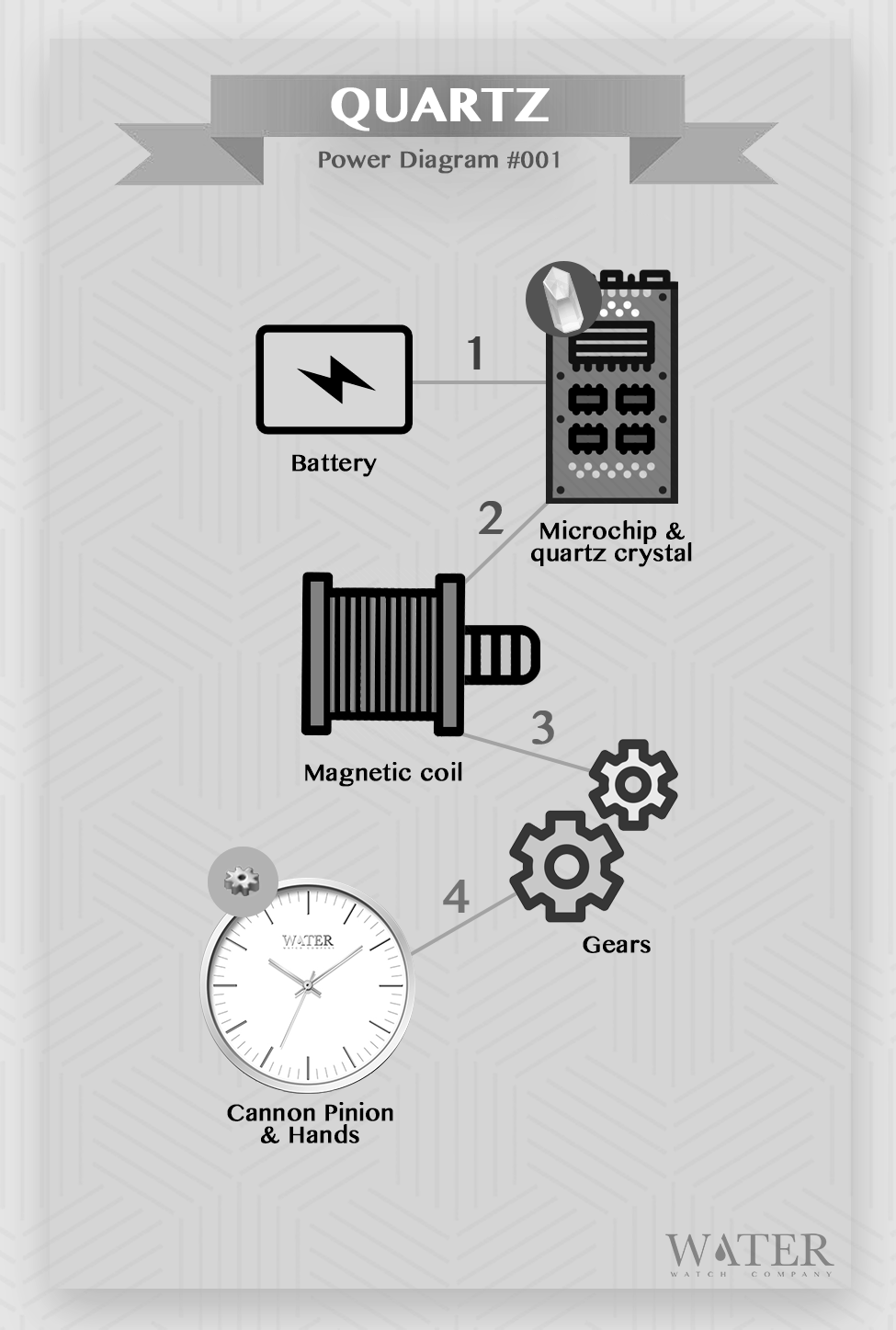THE WATER WATCH CO. BLOG
Lifestyle. Design. Giving. Adventure.
The Differences No One Is Telling You About
Quartz and Automatic Watch Movements

Source: Zenith Watches
Heard about quartz and automatic movements? Perhaps you have heard about them, but you aren’t too sure if you really know what they really are. You may ask yourself questions like ‘what sets the two apart?’ Or ‘which is better?’ Well, there are lots of differences between the two movements, and sure, maybe neither is better. It just depends on what you are looking for; your taste and style. That’s all you need to decide on which is best for you.
Just like a car, a watch has an engine – the movement. But unlike a car, a watch has more than one type of engine. Many say a watch has two types of engines while others claim they are three. Though, that depends on what they consider for their classification, for now, let’s concentrate on the two main types of movements – quartz and automatic movements.
We’re going to cover a lot and move quickly. So, lean in and pay close attention throughout the rest of the following section. Hopefully, you’ll grow to know how quartz movements and automatic movements compare to each other. But hey, don’t let your guard down just yet! We’ve got a lot to cover.
What Are the Differences Between Quartz and Automatic Movements?
Sure, there are tons that set the two apart. So, to ensure you’re not left with a whole bunch of poor and regurgitated content, we’ll cover one movement and then go to the next. That way, you can leave this page feeling confident that you know the differences between the two. Let’s jump right in.
Automatic Movement Watches
The automatic movement was first invented by John Harwood in the early 1920s. He needed a watch which wouldn’t leave him worried about dust getting stuck in the winding. His newly invented watch utilized a swinging weight that would oscillate back and forth, turning a small gear which would then, wind the watch.
By the 1930s, precisely in 1931, Rolex upgraded the movement by building a rotor system. Today, Rolex’s upgrade is still used in self-winding watches across the globe. But what really is an automatic watch?
An automatic watch possesses a self-winding movement that solely relies on you for its function. When the watch is worn on your wrist, your natural movement creates a power store in the watch. In reality, mechanical movements and automatic movements are similar because they are built around one main system. But they are set apart in how they get their energy. The automatic watch relies on the energy from the wearer’s activity, and it requires very little maintenance.

Source: Miyota
Is an Automatic Movement by Chance Any Good?
From its name, “automatic”, this watch is automated and therefore, it doesn’t need electric power to operate. In a nutshell, it doesn’t use batteries. In addition, an automatic movement doesn’t need regular winding as compared to a mechanical movement. Though, you will have to wear your automatic watch to maintain the automatic movement and keep accurate time. If you have to remove your watch, then you may want to keep it on a watch winder.
Quartz Movement Watches
Quartz technology came to light in the 1960s and disrupted watchmaking across the world. This movement directs an electrical current to a quartz crystal that oscillates and sends power to the hands of your watch. Since the invention of the quartz movement watch, it has been a leader in the industry because of its exceptional accuracy and little maintenance requirements. Additionally, quartz movement watch batteries require less attention because they can last for many years without replacement. If you are looking for a timepiece that’s affordable and accurate, then going for the one with a quartz movement may be the best idea. First introduced by Seiko in 1969, the quartz movement watch changed the watch industry forever.

Source: Water Watch Company
Is a Quartz Movement Worth It?
One of the many reasons why quartz has taken over the watchmaking industry is because of its accuracy – in most cases, accurate within a few seconds, yearly. Quartz movement watches are also extremely durable because they don’t have many moving parts compared to mechanical/automatic types. And because of its simplicity, you are able to customize a few more features like altimeters, alarms, compasses, etc.… When it comes to accessories, weight often comes into play and for the majority of people– the lighter the better. Perhaps, that’s the reason why many prefer quartz– because they’re light and slimmer than automatics. If you prefer a quartz movement watch, you can check out some of the latest watches from Water Watch Company’s debut collection: Harbor, Channel, and Beck. Watches from this 2018 collection feature all Citizen Miyota brand quartz movements, a respected Japanese brand with quality equivalency to Swiss production.

Source: Miyota
Laying claim to the first use of one of Miyota’s newest quartz movements, the 0T50, Water Watch Company created the Beck Series: clean, bold and the perfect mix of form and function. This new quartz movement features a day/date complication and sub seconds dial. The watch has domed sapphire crystal glass, 10ATM water resistance, and an option for full-grain vegetable tanned Italian leather, or a 316L stainless-steel band. And if you prefer an automatic movement watch, check in with Water Watch Company in fall 2019, we may have a few tricks up our sleeves ;)
The Bottom Line
It’s worth comparing between quartz movements and automatic movements. Needless to say, quartz is more affordable and easier to maintain compared to the automatic movement. However, automatic movements have an indefinite lifespan, are quite complex, and are a great opportunity to show off your horological passions. All the same, it’s up to you to choose which one best suits your style.

